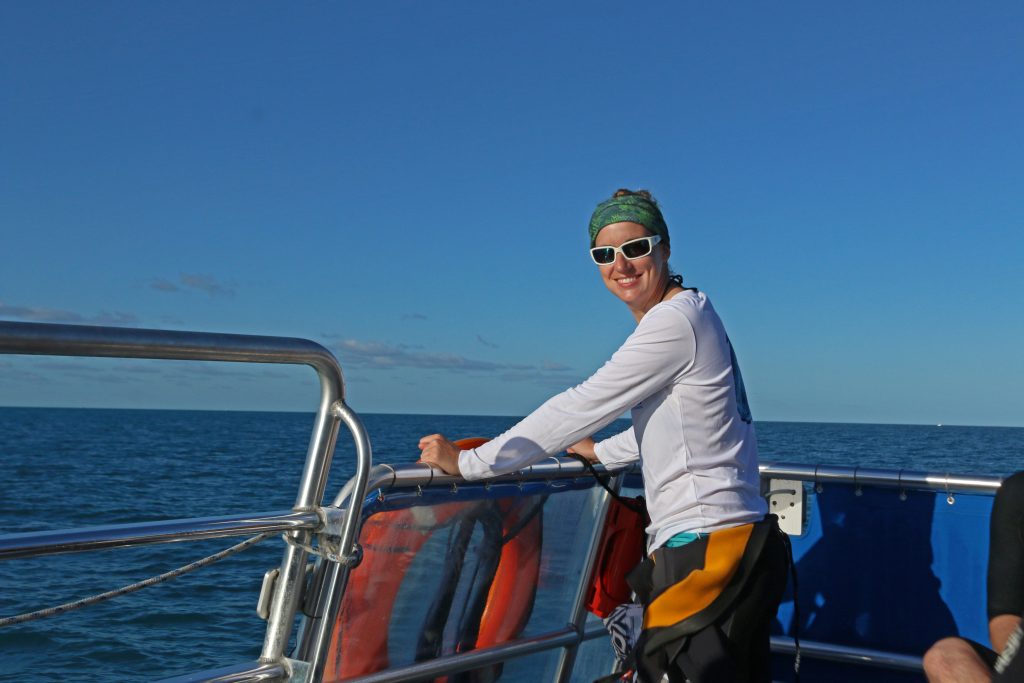In mid-January, I hopped on a boat from a Key West, Florida, harbor with my colleagues from the Natural Resources Leadership Institute. As the sun rose higher in the morning sky, we diligently applied sun lotion and pulled on wetsuits, organizing our snorkel gear and flippers.
We met in Key West to learn where the marine protected areas around the Keys were located and also how they came into being – a result of stakeholder groups working together for years to hammer out the final maps. Now, we motored out to the protected reefs themselves to see what the anglers, divers, scientists and others had worked so hard to conserve.
The ecoguide leading our trip threw out the anchor when we reached the sand just before the reef, and I pulled the snorkel mask over my forehead and hair. Brown pelicans and magnificent frigatebirds soared above our heads, occasionally diving into the waves in search of a fishy meal. Without further ado, we leaped into the waves.
Right away, I squealed with delight at the vista beneath me. The coral reef rose from the bottom like an underwater city covered with fish of all sizes and colors. Finger-length species sported yellow, blue, green and black shades, while parrot fish tailed out of crevices in their turquoise hues. We followed above the slow swimming of a barracuda, discovered the wide wings of a ray and were even startled by a reef shark moving swiftly beneath us. The coral waved in the currents, acting as the structure and life support system for this vibrant ecosystem.
We snorkeled for an hour, but I could have stayed all day. The moment we splashed into the waves my fellowship group and I realized – if we hadn’t before – how incredible this ecosystem truly is, and I felt grateful for the locals, environmental advocates and stakeholders who had given their time and effort to protect these reefs.
Of course, the people of the Florida Keys cannot protect these reefs alone. Coral is in danger from broad climate change forces: higher temperature and acidification leading to bleaching, disease and more. We must continue to combat climate changes in our daily lives as well as through other local, state, and federal policies so the brilliant reef system I witnessed that morning will continue to thrive.


